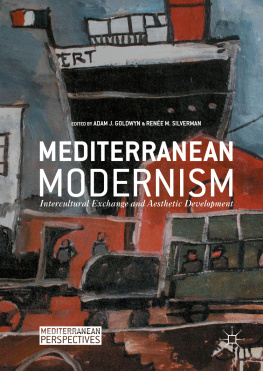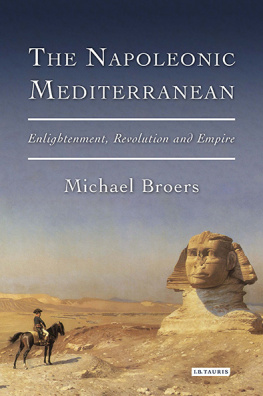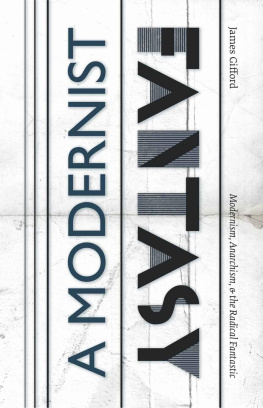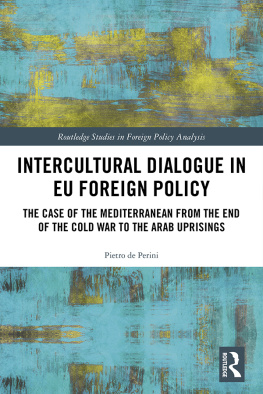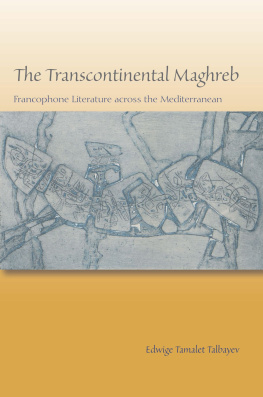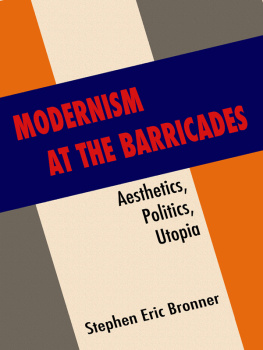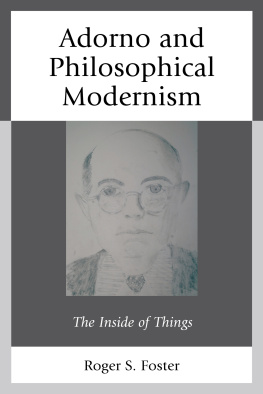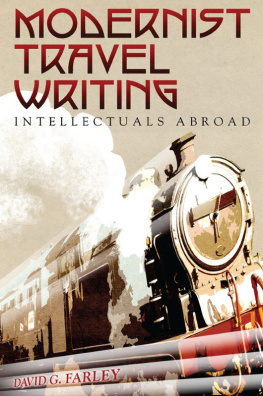1. Introduction: Fernand Braudel and the Invention of a Modernists Mediterranean
The Cosmopolitan Voice of Mediterranean Modernism
In 1923, the young French historian Fernand Braudel began working on a book about the Mediterranean policy of the sixteenth-century Spanish King Philip II. By the time it was published as La Mditerrane et le Monde Mditerranen lEpoque de Philippe II in 1949, then Braudel can be fairly said to have invented the modern Mediterranean.
In many ways, Braudels life can be considered a microcosm of the larger political, cultural, and aesthetic changes which would come to define modernism in Europe and the Mediterranean; indeed, the years between Braudels birth (1902) and the publication of La Mditerrane et le Monde Mditerranen lEpoque de Philippe II (1949) coincide with the peak period of modernism. Born in Lumville-en-Ornois, a small village in northeastern France, Braudel as a young man received his formal education in Paris. This early period of his life contains the seeds for his future development, particularly with regard to his conception of the Mediterranean. Braudels village roots on the margins of French and Mediterranean culture had a lasting impact on his development. A historian of peasant-stock, Like Haussmanns Paris, Hbrards Thessaloniki dispensed with the winding streets and narrow alleyways of the medieval city and replaced them with broad boulevards, regular blocks, and square plazas.
The second important influence in Braudels formative education (and thus in his later construction of the Mediterranean) was his introduction to the academic historiography of the professors at the Sorbonne. These were divided into two camps: the more traditional Sorbonnistes and their critics, principally the Annalistes led by the historians Lucien Febvre and Marc Bloch (the latter a Jewish intellectual murdered in 1940 by the Gestapo for his activities in the Resistance). In the same issue of The Journal of Modern History in which Braudel published his memoirs, J.H. Hexters Fernand Braudel and the Monde Braudellien outlines the academic battles between the Sorbonnistes and Annalistes:
The goal of the Annales [the journal edited by Febvre and Bloch and, later, Braudel] from the outset, therefore, was to undo the work of the Sorbonnistes , to turn French historians away from the narrowly political and the narrowly diplomatic, to turn them toward the new vistas in history.
Braudels early initiation into and subsequent leadership of the Annales school proved decisive for the new Mediterranean that he would invent: Braudels later experiences would convince him that the Sorbonnistes and their view of historythe view represented by Braudels early proposal to write on Philips Mediterranean policywas a mode outmoded, no longer adequate for coping with the issues which History must address itself, insufficient to capter lhistoire du monde. For the new History, a new sort of equipment is necessary, and a new organization of research. Though a historian, rather than an artist, Braudels emphasis on newness for its own sake shows his engagement with the broader aesthetic and theoretical trends of modernism: Braudel as avant-garde academic. In his commentary, Hexter rightly emphasizes the new aspects of Braudelian historiography without identifying those features which make it new; he rightly understands that the ideology of newness is more important than the specific form that such newness takes in Braudels work.
History and historiography shape the idea of modernism embraced in this volumeas Braudel with his particular disciplinary background would have instinctively recognized. For as Malcolm Bradbury and James McFarlane have pointed out in their seminal study, one of the predominant conceptions of modernism revolves around the significance of the modern as the historicist feeling that we live in totally novel timesthat we are derivatives not of the past but of the surrounding and enfolding environment or scenario, that modernity is a new consciousness, a fresh condition of the human mind.
Keeping Bradbury and McFarlanes observations about the modern and modernism in mind, the newness that is central to our vision of what we term Mediterranean Modernism, in a way similar to Braudels innovative approach to the Mediterranean, means a break from narratives that would circumscribe the Mediterranean within specific geographic spaces and determine its center and periphery, thereby prescribing and proscribing its identity/ies. Modernism in the Mediterranean arose from the same confluence of large-scale political, historical, and cultural factors in the late nineteenth century and early twentieth century as modernismthe decline of colonial regimes and the increase in national fervor, the mass migrations of peoples caused by such political realignments, as well as by new technologies and industrializationbut these factors were conditioned by the Mediterraneans unique history and geography, in particular its colonial, postcolonial, and colonizing circumstances which, as Braudel knew, coexisted unevenly, uneasily, and simultaneously.
Likewise, this volume, paralleling Braudels methodology and in keeping with what Douglas Mao and Rebecca Walkowitz have called the new Modernist Studies,
Given the impossibility of separating the colonial and postcolonial strata of this archeology directs us, like Braudel in his day, and in keeping with a recent study by David James and Urmila Seshagiri that emphasizes the reciprocal relationship between modernism and Postmodernism, to go beyond the customary limitation of modernism to the period 18901930, the dates attributed to it in Bradbury and McFarlanes study. In fact, those characteristics that define our vision of modernism in the Mediterranean began to emerge earlier than 1890. Articles by Defne izaka and Adam J. Goldwyn, for instance, find Modernist influences in the Eastern Mediterranean in the 1860s and 1870s, while Rob Baum and Federica Frediani focus on late twentieth-century works that reimagine the Mediterranean during the Modernist period from a postmodern perspective. Broadening the time period conventionally attributed to modernism goes hand in hand with widening its geographical, cultural, and linguistic bounds; doing so permits the inclusion of various modernist iterations, ranging from Hispanic modernismo (1880s1920s) to post-World War II explorations of modernitys meaning and consequences from postmodern and postcolonial perspectives.
Returning now to Braudel, his particular shift from the old history to the new, from the old Mediterranean to the modern one, similarly relates to the interrelationship between the colonial and the postcolonial, modern, and postmodern. Braudel was galvanized by his move in 1923 to Algeria, then a French colony, where he taught history, first in Constantine and then in Algiers; he would stay for the next nine years. Braudel, like so many of the leading intellectuals of the period, became a product of the mingling of Mediterranean cultures which he himself would later studya Frenchman living in Algeria, studying Spain and its imperial holdings in the Mediterranean and abroad. It was during his time in Algeria that Braudel first wrestled with many of the issues of cultural hybridity which The Mediterranean did so much to bring to the center of historiography. In Personal Testimony, a brief memoir published in 1972, Braudel describes the effect of his stay in Algeria on his thinking:

